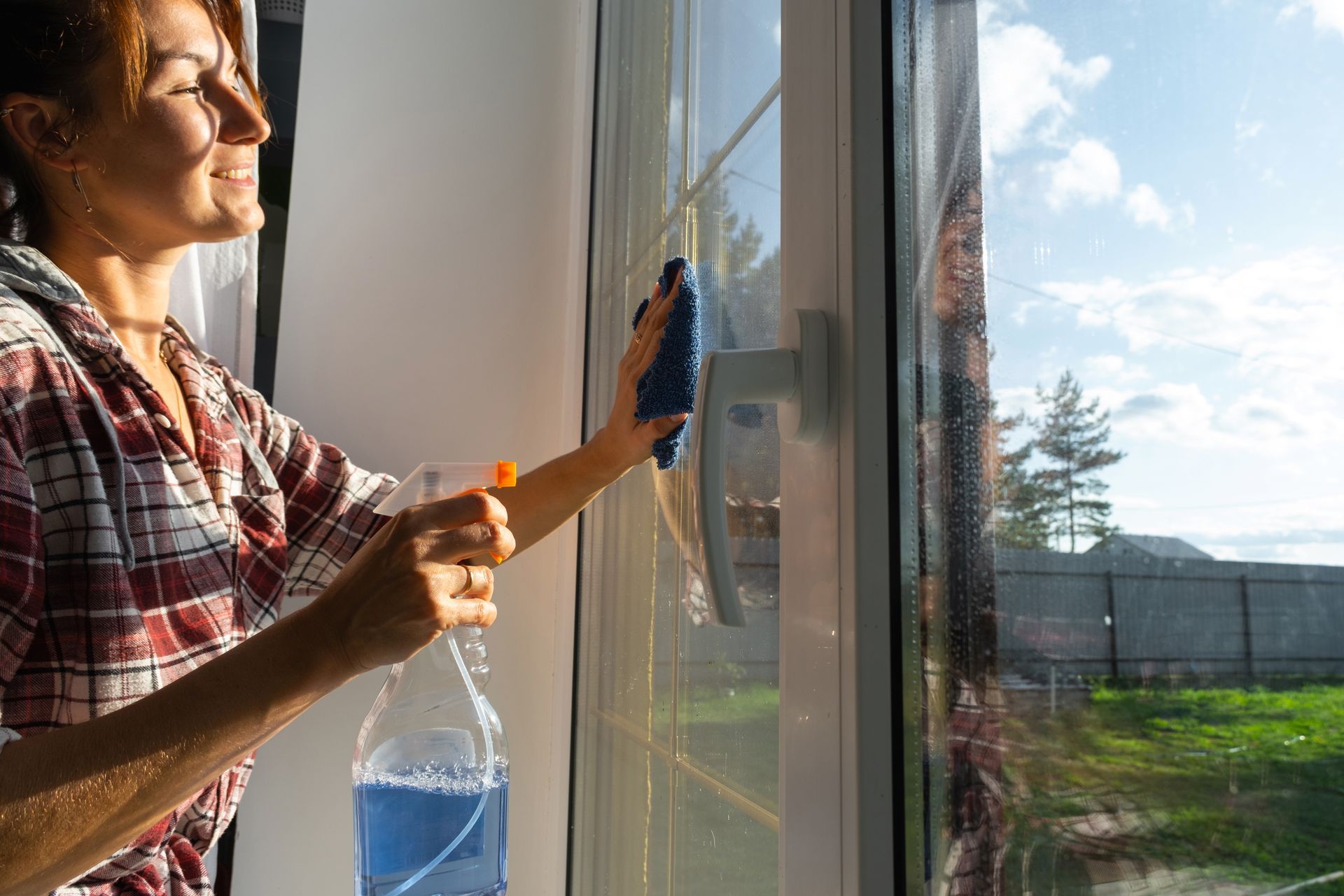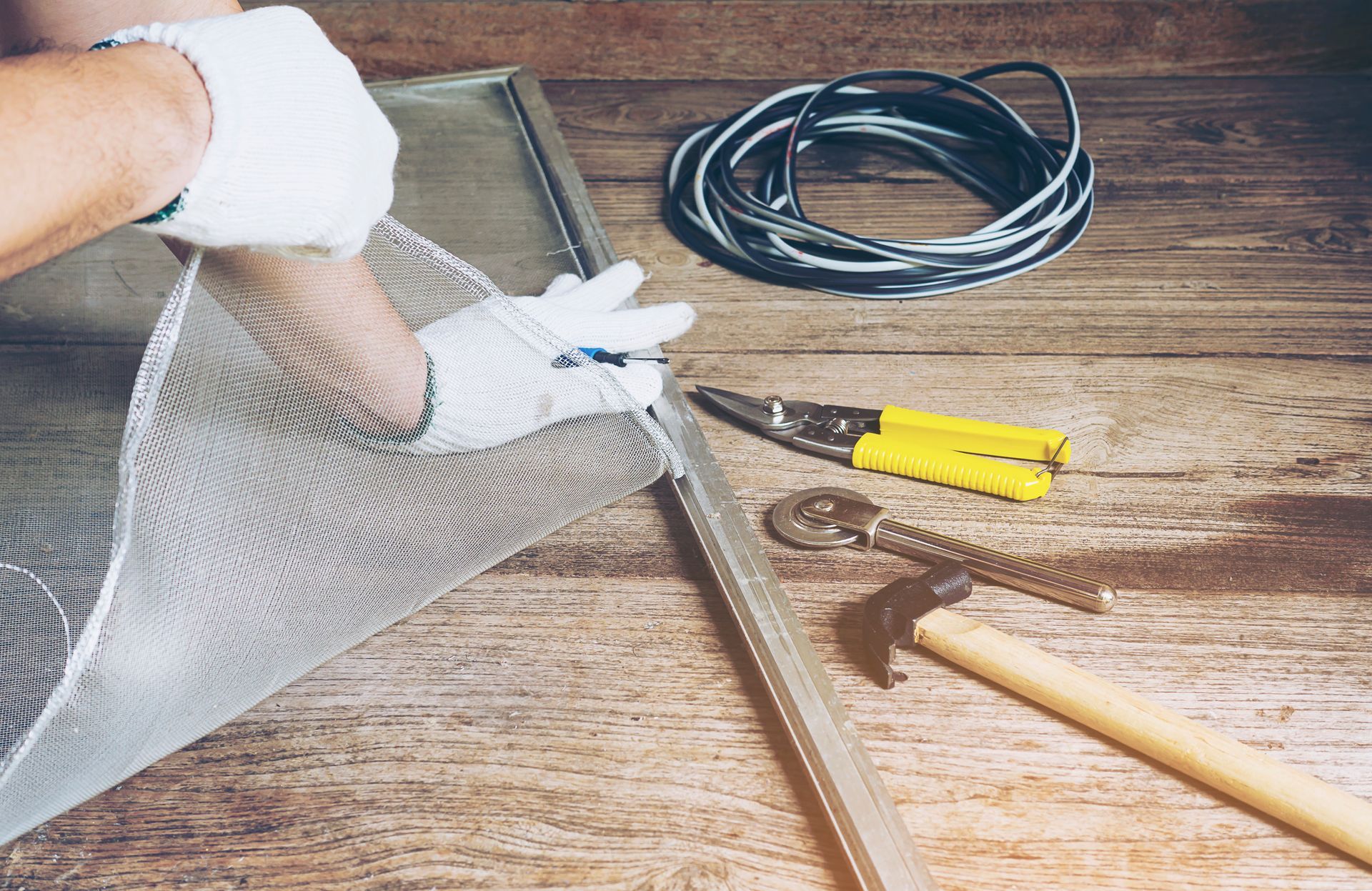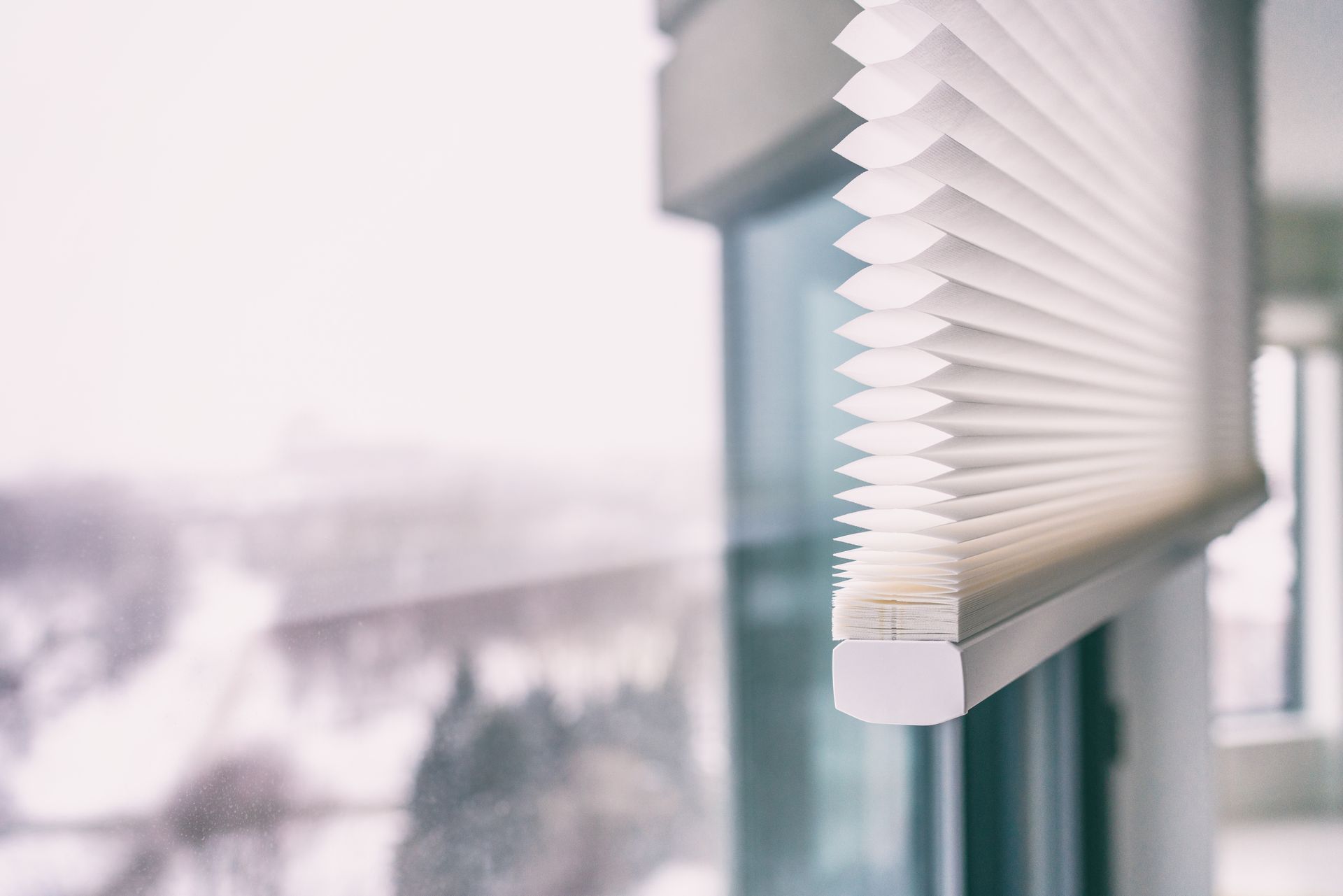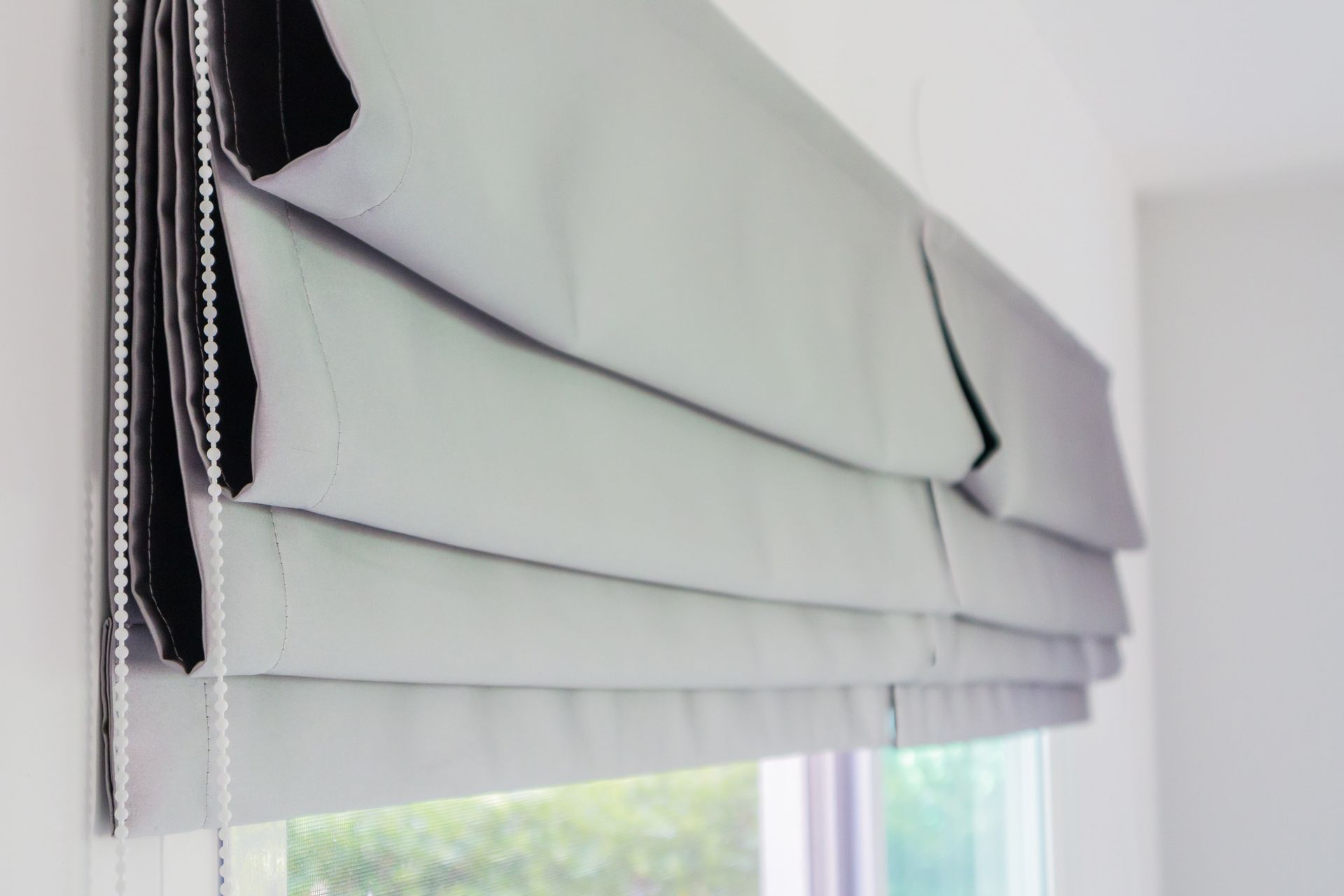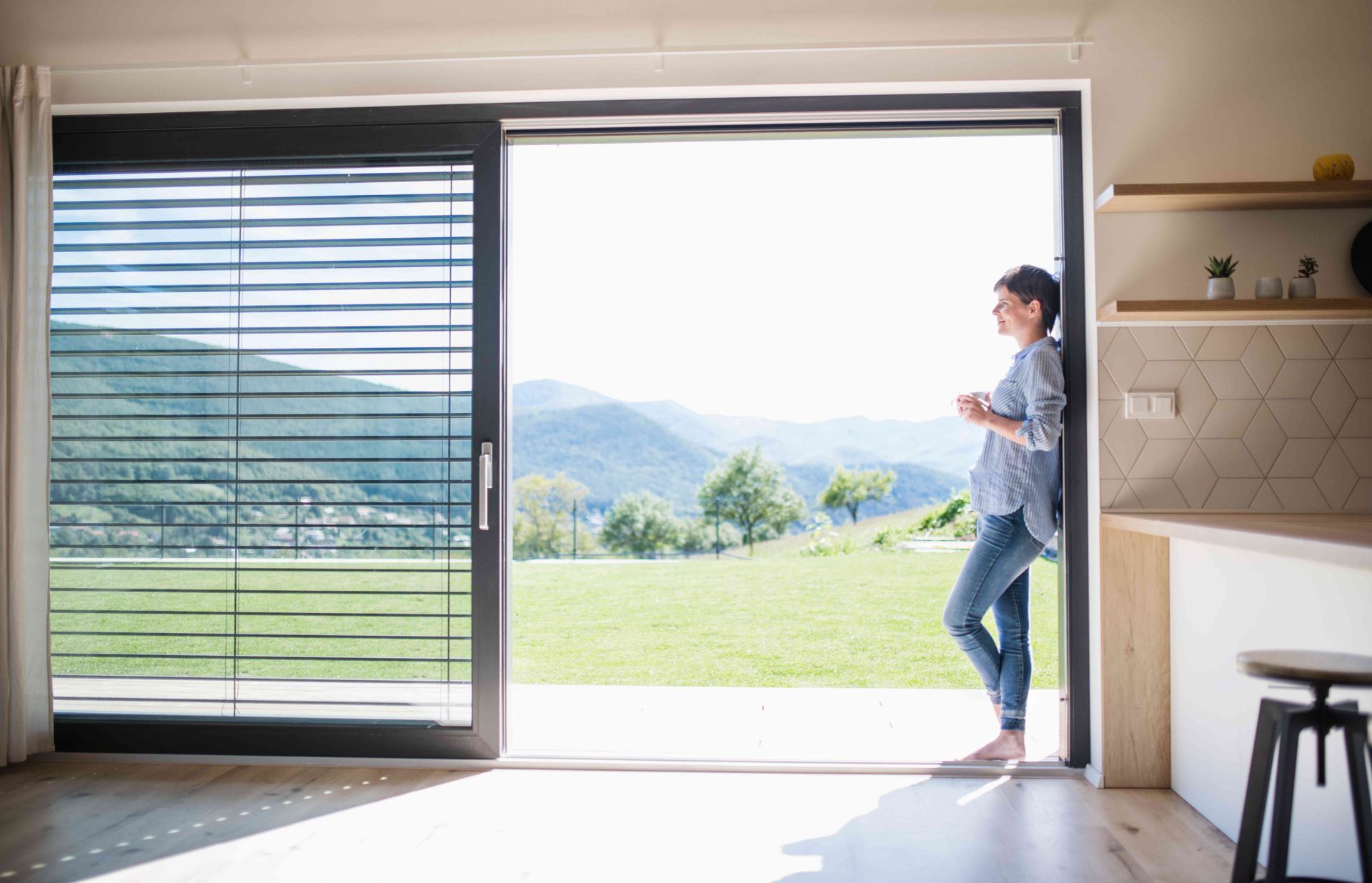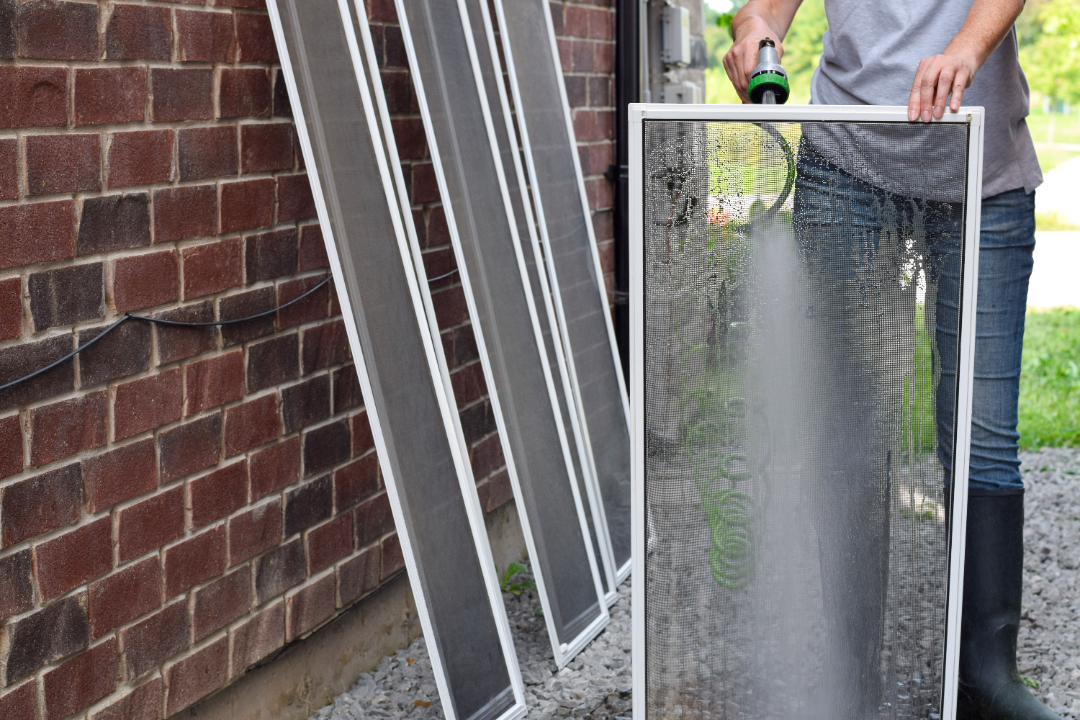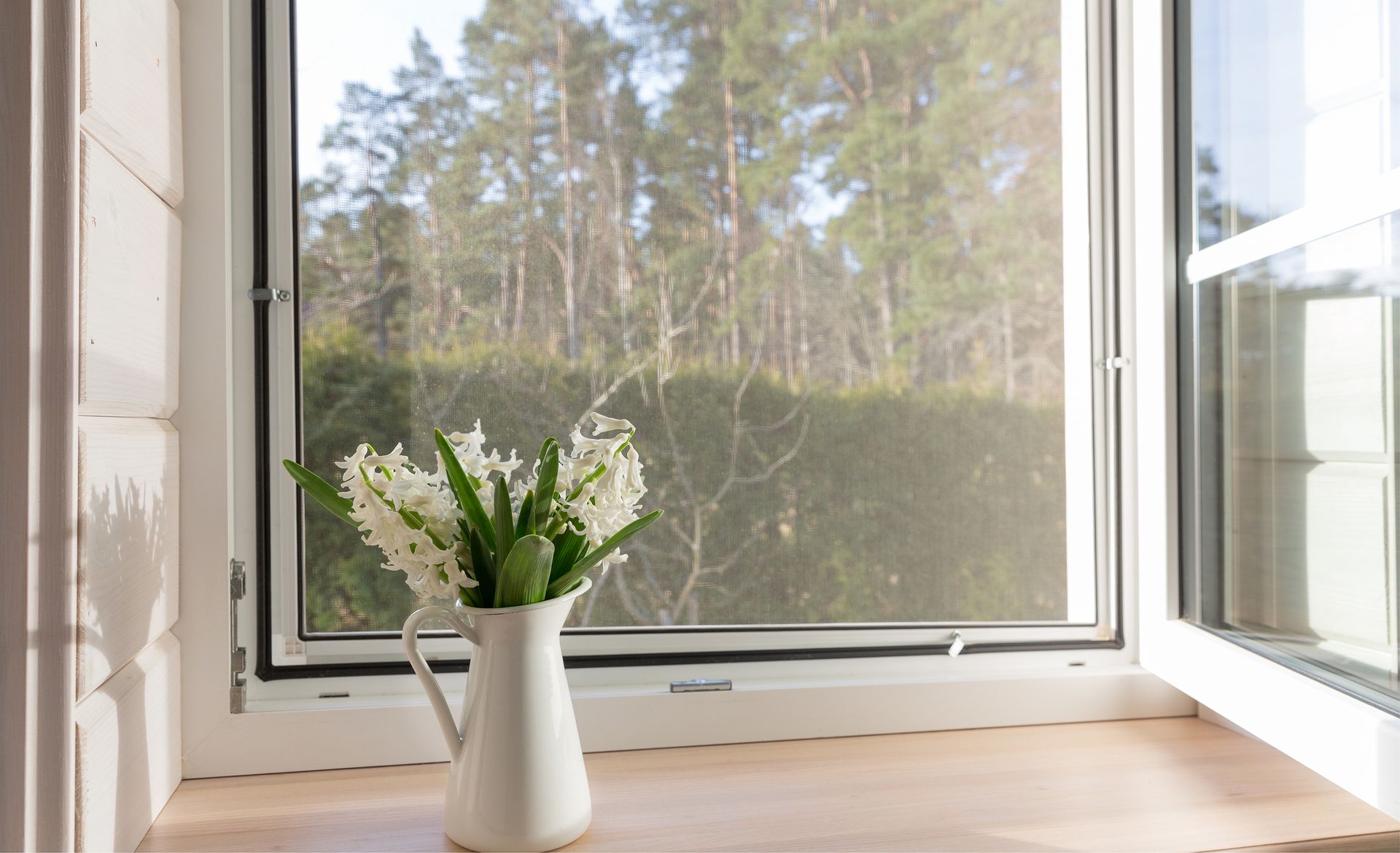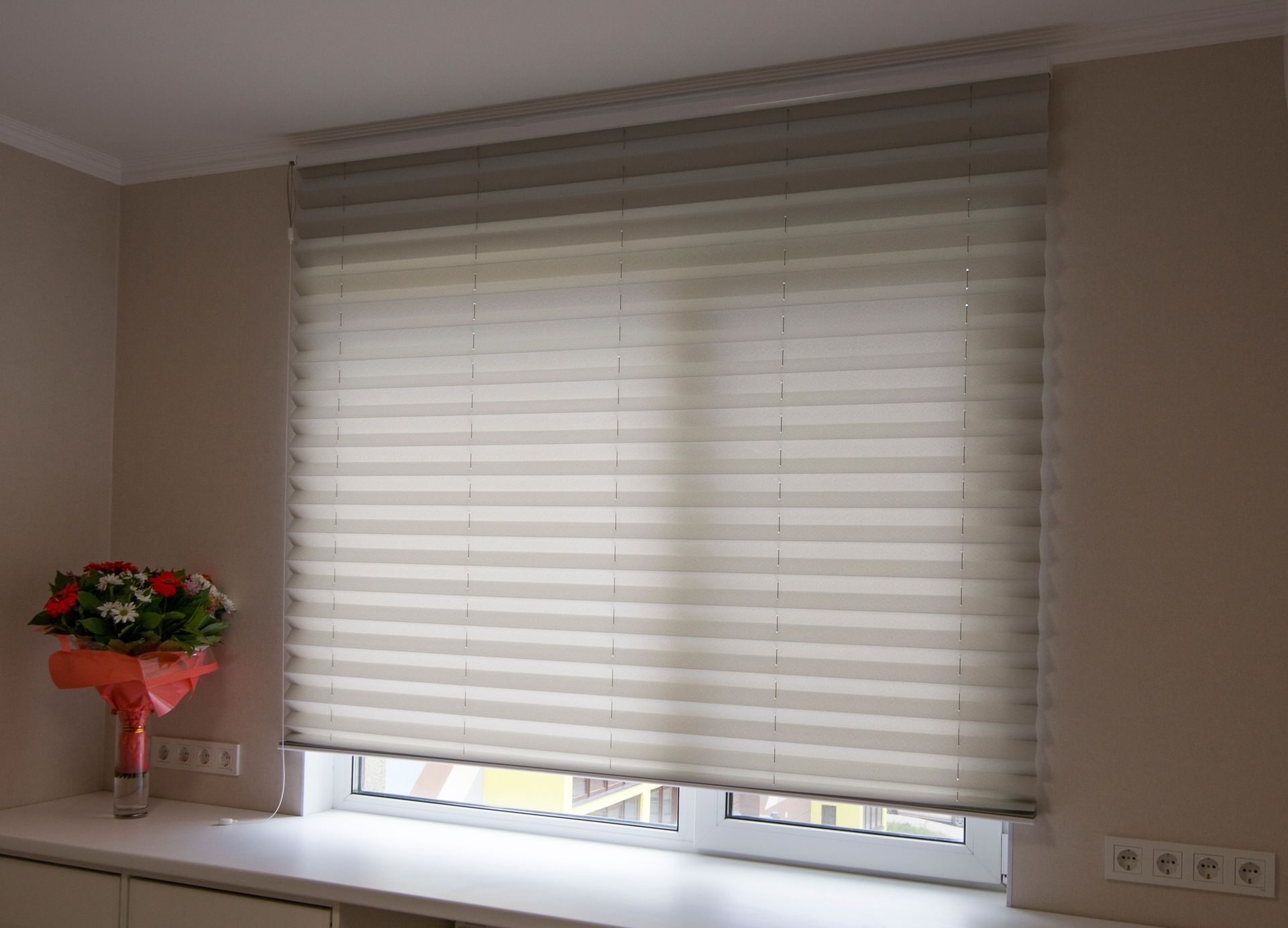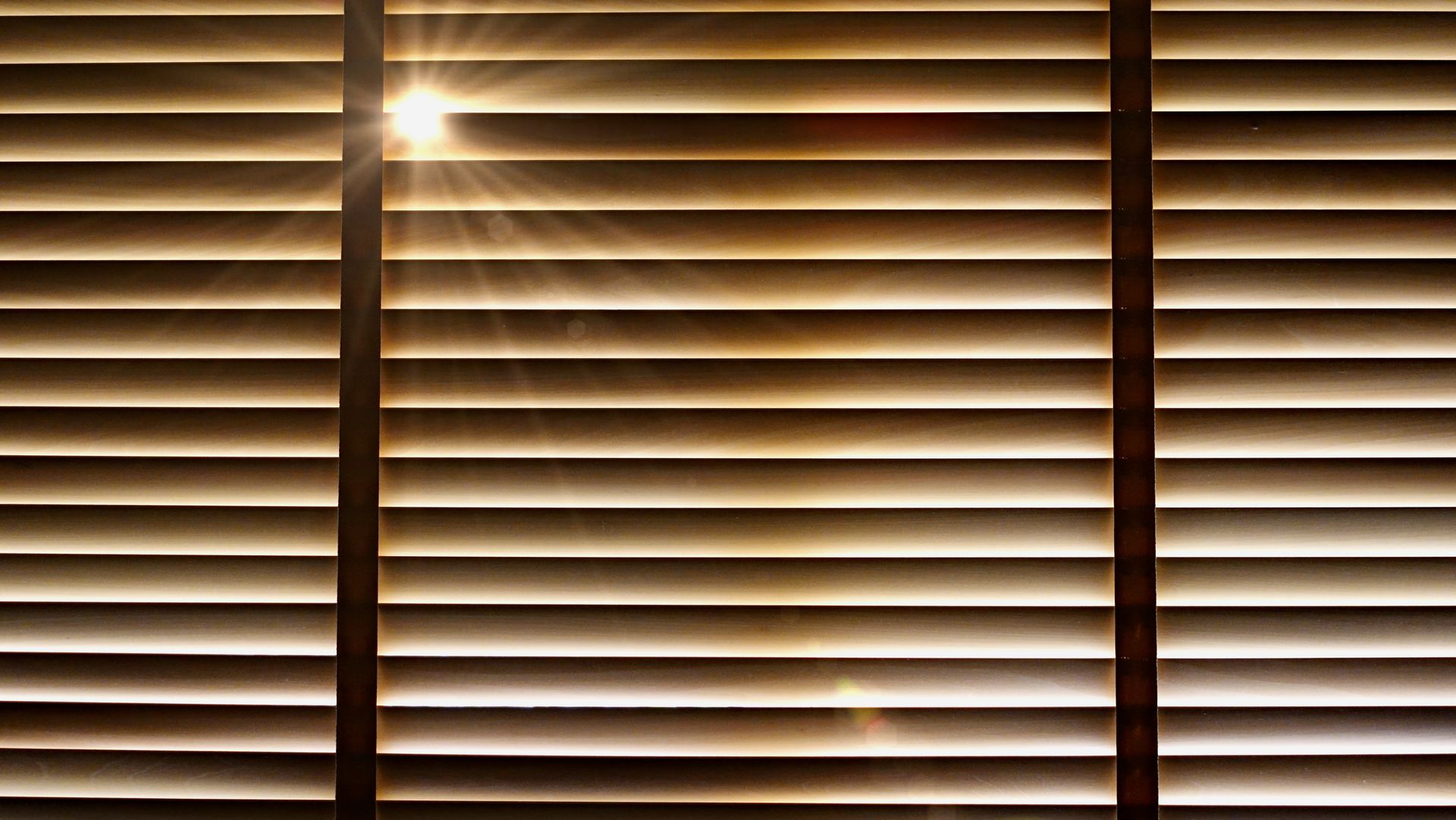How Pollen Resistant Screens Can Help Reduce Allergens
Did you know that a staggering 81 million Americans struggle with seasonal allergies? Pollen is the number one culprit behind these uncomfortable symptoms. These tiny particles, measuring between 10 and 1000 microns, easily slip through standard window screens and make their way into our homes. But can pollen get through window screens designed specifically to block it?
At Screen Master, we've seen how these microscopic invaders can turn spring from a season of renewal into weeks of misery for allergy sufferers. The good news? Pollen guard screens provide an effective solution to this widespread problem. These specialized window screen filters prevent pollen and dust from entering your living space, allowing you to enjoy fresh air without the sneezing and itchy eyes.
Our guide explores the ins and outs of pollen blocking window screens - how they work, what makes them effective against different types of pollen, and how to select the perfect option for your home. Whether you're considering an upgrade to your current screens or searching for ways to reduce allergy symptoms, we'll help you make an informed decision that brings relief all season long.
The Convenience of Pollen Filtering Window Screens
Home comfort shouldn't require keeping your windows sealed shut during beautiful spring days. Pollen proof screens offer the perfect balance - fresh air without the allergens. These screens serve as your first line of defense, significantly reducing the amount of pollen that enters your home while maintaining airflow and visibility.
Understanding Pollen and Its Impact on Health
Spring allergies plague millions across the country, with pollen serving as the main trigger for seasonal allergic rhinitis, commonly known as hay fever. At Screen Master, we know that understanding how pollen affects your indoor environment is crucial for effectively managing those uncomfortable allergy symptoms.
What Causes Spring Allergies
Your immune system sometimes overreacts to harmless airborne substances like pollen. Tree pollen appears earliest in the year (March/April), followed by grass pollen (June/July), and finally weed pollen like ragweed in late summer and fall. When these particles enter your system, your immune system mistakenly identifies them as threats, releasing chemicals such as histamine that trigger those unpleasant allergy symptoms.
Weather patterns significantly influence pollen release. Mild winter temperatures often cause plants to pollinate earlier than normal, while rainy springs promote rapid plant growth, potentially extending your symptom duration. Remember that seasonal pollen levels typically peak during morning hours, and windy, warm days dramatically increase airborne pollen levels.
How Pollen Enters Your Home
Pollen makes its way into your home through two main routes: ventilation and hitchhiking on clothing/textiles. Open windows and doors provide the most direct entry path, particularly during high pollen count days. Those gaps in insulation around windows, doors, and in attics also allow pollen-filled air to seep indoors.
What many homeowners don't realize is that your clothing, hair, and pets act as significant pollen transporters. Research shows that more than half of the pollen clinging to futons or laundry stays put even after being brushed or shaken off. Your pets that enjoy outdoor time bring pollen inside on their fur, distributing it throughout your living space.
Health Effects of Indoor Pollen Exposure
When pollen invades your indoor spaces, it can trigger numerous health issues, especially for sensitive individuals. Common symptoms include:
- Runny nose and nasal congestion
- Sneezing and coughing
- Itchy, watery eyes
- Sinus pressure and postnasal drip
- Extreme tiredness and fatigue
These symptoms become severe enough to significantly impact quality of life. Indoor allergens like pollen can also trigger dangerous asthma flare-ups in people with allergic asthma.
Children, elderly individuals, and those with existing respiratory conditions face particular vulnerability to indoor allergen exposure. We've seen firsthand how pollen allergies often worsen over time—people who previously experienced only mild reactions may suddenly become highly sensitive to particular allergens after repeated exposures.
This is why at Screen Master, we strongly recommend installing pollen screens for windows. Our pollen blocking window screens significantly reduce your exposure to these allergens, helping minimize these troublesome health effects. We bring our expertise directly to your doorstep to ensure your home becomes a sanctuary from seasonal allergies.
How Pollen Guard Screens Actually Work

At Screen Master, we've installed countless pollen screens for windows across Los Angeles, helping homeowners breathe easier during allergy season. These specialized screens use advanced filtration technology to stop allergens while allowing fresh air to circulate freely. Unlike standard window screens, pollen resistant options incorporate specific design elements that effectively target those troublesome pollen particles.
The Science Behind Pollen Blocking Window Screens
Our pollen guard screens operate on two fundamental principles that work together to keep your home pollen-free. First, physical filtration creates openings smaller than most pollen particles, establishing an effective mechanical barrier. Second, electrostatic screens utilize specially charged fibers that actually attract and trap pollen particles on contact with the screen surface.
Research conducted in controlled environments confirms that electrostatic window screens deliver superior filtration while maintaining proper ventilation and visibility. This technology creates a protective barrier against airborne contaminants without sacrificing your comfort or the appearance of your windows.
For screens to earn certification from organizations like the Asthma & Allergy Friendly® Certification Program, they must undergo rigorous testing to prove they effectively block pollen passage, clean easily, and contain minimal allergenic chemicals.
Mesh Density and Filtration Capabilities
The effectiveness of pollen screens directly relates to their mesh density. Standard measurements for screen mesh count the number of openings per inch—a 16×16 mesh has 16 openings per inch in both directions.
To understand why this matters, consider the size of what we're trying to block:
- A human hair measures approximately 100 microns in diameter
- Pollen particles typically measure 7-10 microns
- Standard window screen openings are about 1 millimeter (1000 microns)
To effectively filter pollen, screens must have much smaller openings. High-quality pollen screens feature mesh with apertures of 0.149mm (149 microns) or smaller, created through specialized weaving methods like warp knitting or twill weave.
Comparing Standard Screens vs. Allergy Window Screens
The difference between regular window screens and pollen blocking screens is significant. Standard insect screens typically feature 18×14 or 18×16 mesh configurations designed to block insects but not smaller particles. In contrast, allergy window screens employ much denser mesh—commonly 20×20 or higher—specifically engineered to capture microscopic allergens.
Testing shows that properly designed pollen screens can reduce indoor pollen exposure by 80-100%, depending on pollen type and size. Some manufacturers report blocking rates of up to 98% for specific pollen varieties like birch, grass, and ragweed.
At Screen Master, we take pride in offering dust proof window screens that not only excel at filtration but also undergo additional testing for chemical composition and volatile organic compound (VOC) emissions. This ensures our products don't introduce other irritants into your home environment.
Our mobile window screen service brings this technology directly to your doorstep, eliminating the hassle of transporting screens to a repair shop. We can assess your current screens and recommend the ideal pollen-resistant replacements tailored to your specific needs and allergen concerns.
Choosing the Right Pollen Screens for Windows
At Screen Master, we've helped countless Los Angeles homeowners select the ideal pollen screens for their windows. Finding the right balance between filtration efficiency and practical considerations is key.
Standard screens only filter particles sized around 2,000,000 nanometers - far too large to stop pollen effectively. For allergy sufferers, specialized allergen screens aren't just a luxury - they're essential for maintaining clean indoor air.
Key Features to Look For
When exploring options for pollen blocking window screens, we recommend prioritizing these crucial elements:
- Filtration efficiency: Look for screens certified to block at least 80% of pollen particles. The Asthma & Allergy Friendly® Certification Program requires screens to reduce pollen by >80% for each pollen type tested.
- Cleanability: Screens must be easily washable, removing >90% of allergens post-cleaning. This maintains performance throughout allergy season.
- Low chemical emissions: Quality screens undergo testing for volatile organic compounds (VOCs) and should meet stringent emission standards.
- Mesh density: The tighter the weave, the better the filtration. Premium options filter particles down to 300 nanometers.
- Visibility and airflow: Consider the balance between filtration and reduced airflow, which can decrease by approximately 40% with some products.
Worried about losing your view or fresh air? Don't be! Our recommended dust screens for windows maintain excellent visibility while significantly reducing allergen infiltration. We help you find that perfect balance between protection and enjoyment of your windows.
Best Materials for Pollen Filtration
At Screen Master, we primarily use polyester mesh screens as they typically outperform standard fiberglass, blocking up to 50% more particles. The most effective designs we install include:
- Electrostatic polyester: These materials actually attract pollen particles through electrostatic adsorption.
- NanoScreen™ technology: A multi-layer construction offers superior durability while maintaining 80-85% porosity for air circulation.
- Micromesh screens: With holes under 600 microns wide, these trap over 85% of pollen grains.
- Spun polyester with proprietary coating: This material attracts pollen spores "like a magnet" and traps them in fibrous material.
With over 20 years of experience in the screen industry, we've tested countless materials and narrowed down to these top performers for our customers with allergy concerns.
Cost Considerations
Looking for screen repair near you? We bring our shop to you! Our transparent pricing ensures you know exactly what to expect:
Smaller DIY kits start around $40-80, while custom-sized replacement screens range from $57-65. Complete pollen filtering systems for large areas or porch enclosures can cost $199-465, though these provide comprehensive protection.
Although initially more expensive than standard screens, the health benefits often justify the investment, particularly for those with severe allergies or asthma triggered by pollen exposure. At Screen Master Door & Window, we provide free estimates so you can make an informed decision about which option works best for your home and budget.
Remember, indoor air quality directly impacts your family's health. We've seen firsthand how proper pollen screens can transform spring from a season of suffering to one of enjoyment. Our mobile service brings these solutions directly to your doorstep throughout Los Angeles and surrounding areas.
Installation and Maintenance of Pollen Free Screens for Porch and Windows

At Screen Master, we've seen how proper maintenance of pollen resistant screens makes all the difference in their effectiveness during allergy season. Regular care not only extends their lifespan but ensures optimal filtration performance exactly when you need it most.
Seasonal Cleaning Tips
Keeping your allergy screens clean is vital - accumulated pollen can significantly reduce their filtration capacity. During peak pollen season, we recommend cleaning your screens at least once a week. For Los Angeles neighborhoods with particularly high pollen counts, you may need to increase cleaning frequency.
Our professional cleaning process follows these steps, which we recommend for our customers between service visits:
- Gently remove screens from their frames and keep them outdoors to avoid bringing allergens inside
- If indoor cleaning is necessary, use your bathroom with the exhaust fan running
- Use a vacuum with a brush attachment to remove loose pollen before washing
- Wash with mild soap and warm water solution (a vinegar-water mixture in 1:3 ratio works effectively too)
- Apply gentle pressure with a soft brush or sponge on the mesh
- Thoroughly rinse with clean water using gentle pressure
- Allow screens to dry completely before reinstallation
Important note: Never use high-pressure washers on pollen screens as this can damage the specialized mesh. We've seen too many damaged screens from well-intentioned but harsh cleaning methods.
For pollen free screens for porch areas during high pollen seasons, running ceiling fans on low settings helps prevent dust from settling. Many of our customers with outdoor decks find that installing a misting system helps catch airborne pollen before it settles.
The best way to clean pollen off a screened porch is to start by gently brushing or vacuuming the screens to remove loose particles. Then, use a soft cloth or sponge dampened with a mild soap solution to wipe down the screens and surrounding surfaces. Rinse thoroughly with clean water and allow to air dry completely.
To keep pollen out of a screened porch, consider installing pollen proof screen porch materials or adding clear pollen tarp curtains around the perimeter. Regular cleaning and the use of air purifiers can also help minimize pollen build-up in your outdoor living space.
When to Replace Your Screens
Even with perfect maintenance, pollen screens eventually require replacement. With over 20 years of experience, we recommend watching for these clear indicators:
- Visible damage: Tears, holes, or fraying in the mesh allow pollen to pass through, making the screen ineffective
- Loose or warped frames: When frames become bent or warped, gaps form around edges where pollen can enter
- Increased allergy symptoms: If you notice worsening allergies despite closed windows, your screens may no longer be filtering effectively
- Screens that haven't been replaced in years: Older screens typically lack the tight weave of modern pollen-filtering options
Most quality pollen blocking window screens maintain effectiveness for 3-5 years depending on environmental conditions and maintenance frequency. Our team at Screen Master recommends replacement after this period for optimal performance.
We strongly suggest proactively replacing screens before pollen season begins to ensure your home stays protected during peak allergen periods. Our mobile service makes this process convenient - we bring our shop to you, taking precise measurements and installing new screens without you having to transport anything.
At Screen Master Door & Window, customer satisfaction is our top priority. We'll help you maintain your screens for maximum effectiveness and advise you honestly when replacement becomes necessary. Let us help you create an allergen-free environment in your home throughout every season.
Breathe Easy with the Best Pollen Free Screens for Porch Protection
Allergy season doesn't have to keep you from enjoying your outdoor space. At Screen Master Door & Window, our pollen proof porch screens use advanced NanoScreen™ technology to filter out up to 99.9% of pollen and dust—turning your porch into a clean, comfortable retreat.
Whether you're in Los Angeles or the surrounding area, our mobile service makes it easy to upgrade your porch with custom-fit screens that also block rain, UV rays, and dirt. These UV rated screens not only provide allergy protection but also help keep pollen off patio furniture and reduce the need to clean pollen off your deck. Reclaim your outdoor living space—contact us today for a free estimate and experience the difference pollen protection can make.
FAQs
How effective are pollen resistant screens in reducing allergens?
Pollen resistant screens can block 80-100% of airborne pollen from entering your living space, significantly reducing exposure to spring allergens. These specialized screens use advanced filtration technology to prevent pollen particles from passing through while still allowing fresh air circulation.
What features should I look for when choosing pollen screens for windows?
When selecting pollen screens, look for high filtration efficiency (at least 80% pollen reduction), easy cleanability, low chemical emissions, and appropriate mesh density. Consider the balance between filtration and airflow, as some products may reduce airflow by about 40%.
How often should I clean my pollen resistant screens?
During peak pollen season, it's recommended to clean your pollen resistant screens at least once a week. For areas with high pollen counts, you may need to clean them more frequently. Regular cleaning helps maintain their filtration effectiveness throughout allergy season.
Can pollen resistant screens help with other allergens besides pollen?
Yes, many pollen resistant screens are designed to filter out various airborne particles. Some screens can block up to 99.9% of pollen and dust particles, as well as other pollutants. This multi-functional filtration can significantly improve indoor air quality and reduce exposure to multiple allergens.
How long do pollen resistant screens typically last?
Most quality pollen blocking window screens maintain their effectiveness for 3-5 years, depending on environmental conditions and maintenance frequency. After this period, manufacturers often recommend replacement to ensure optimal performance. Regular cleaning and proper care can help extend their lifespan.
